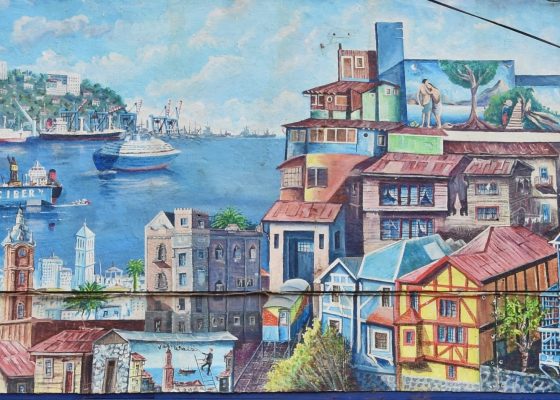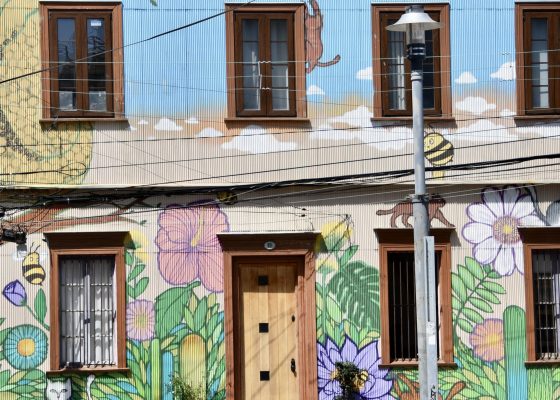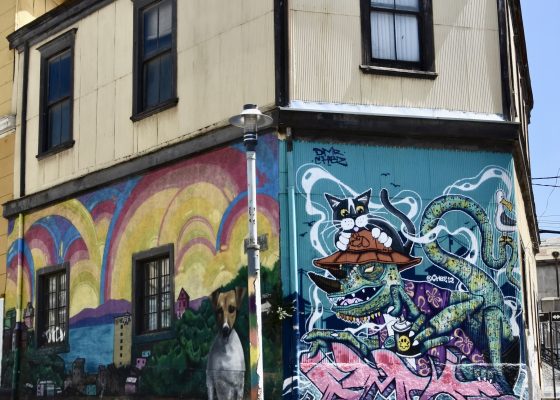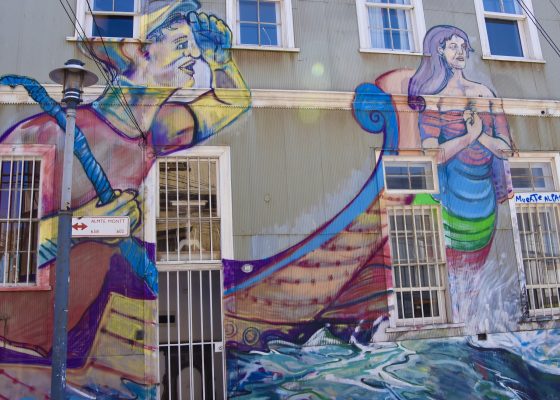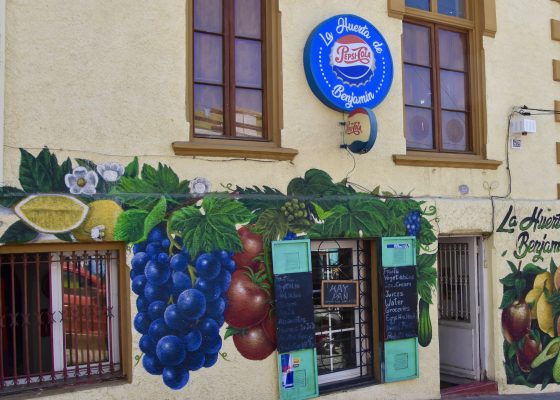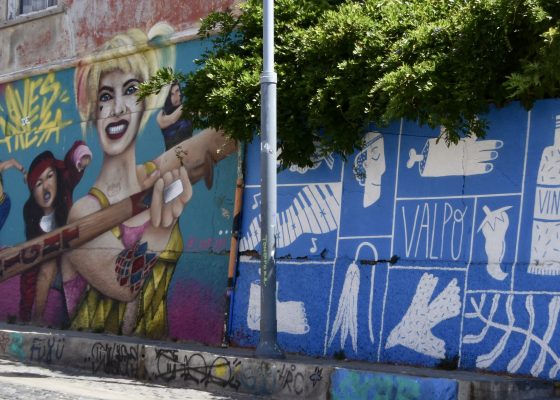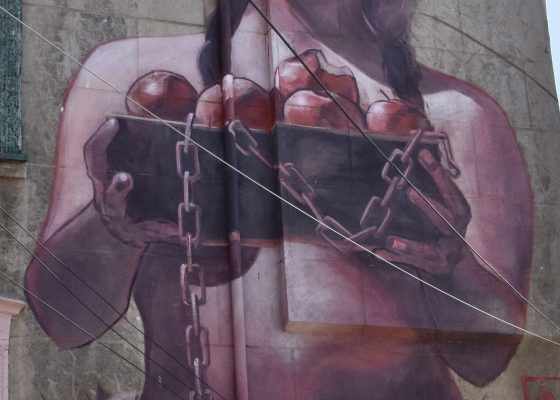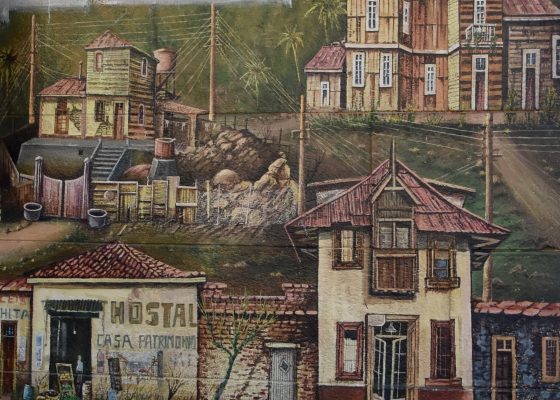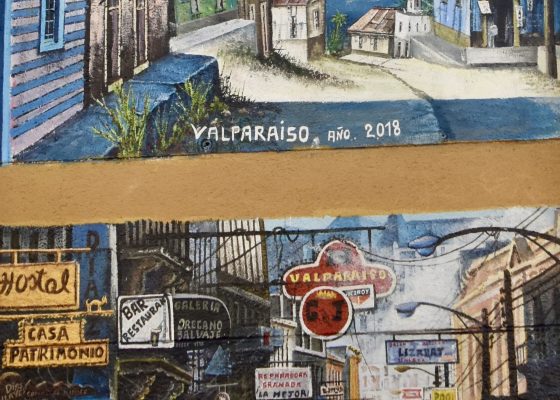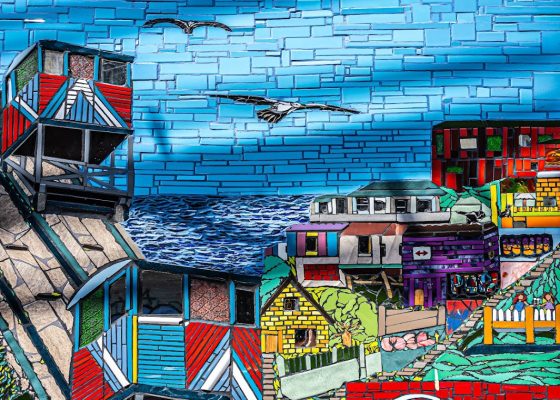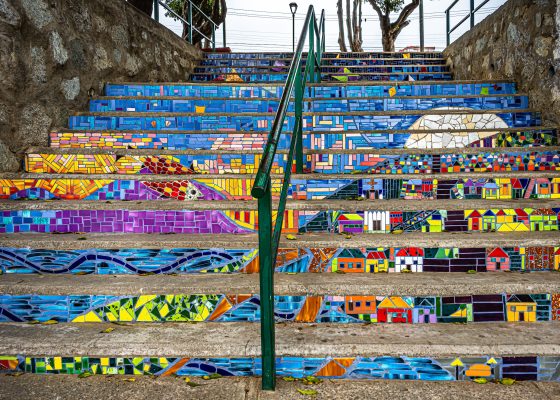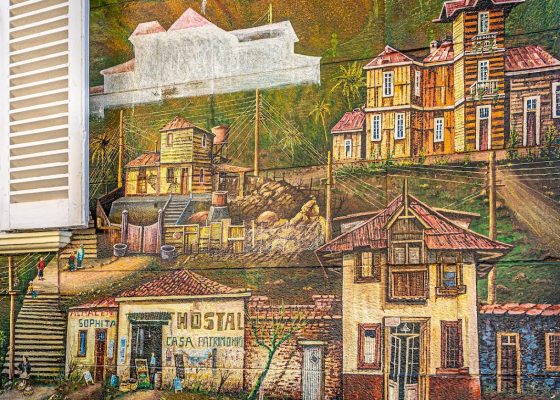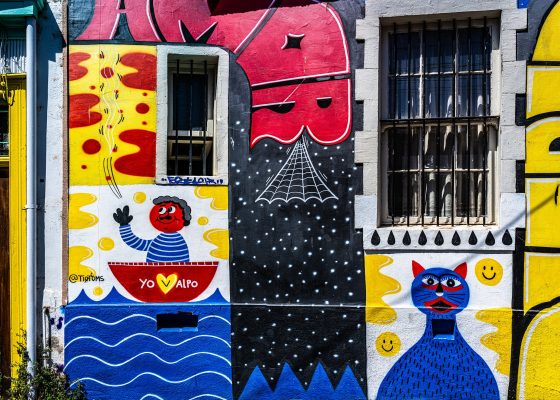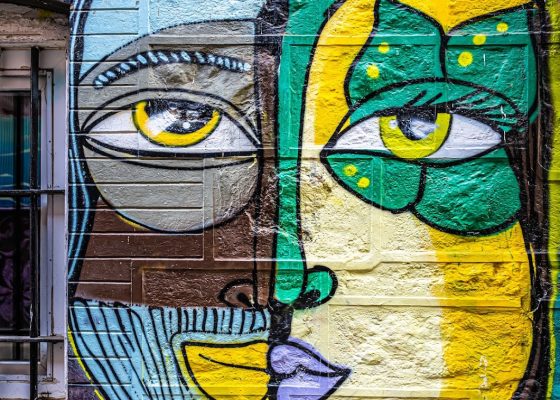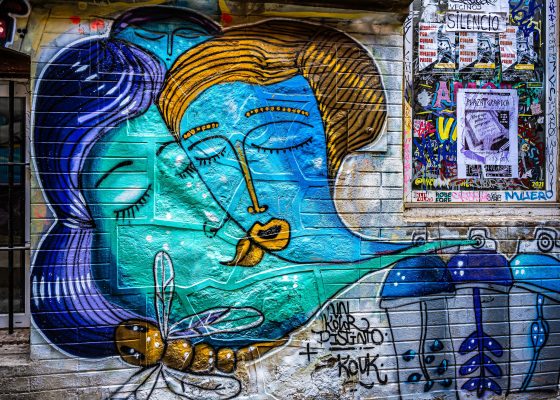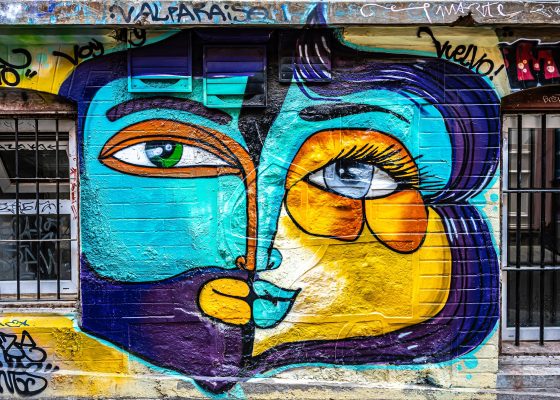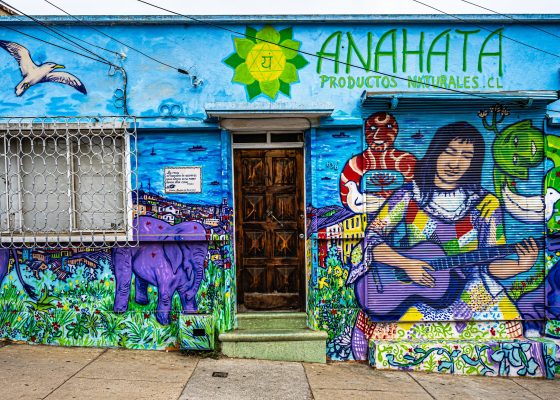Valparaiso – Chile’s Faded Superstar
This is my third post from Chile and the first one that deals specifically with a day on the Adventures Abroad itinerary. In the first post I described a day in Santiago with local guide Chris Whatmore that I recommended as a warm up for the AA tour. In the second I gave an overview of Chile and why going with Adventures Abroad was my preferred way to see this amazing country from top to bottom with Easter Island as a once in a lifetime finale. In this post we are going to head out from Santiago for the day to explore the UNESCO World Heritage Site of Valparaiso, mostly on foot and then conclude with a great seafood dinner in the upscale sister city of Viña del Mar. Valparaiso is a city that has long been on my bucket list so please join us as we start our exploration of Chile in earnest.
History of Valparaiso
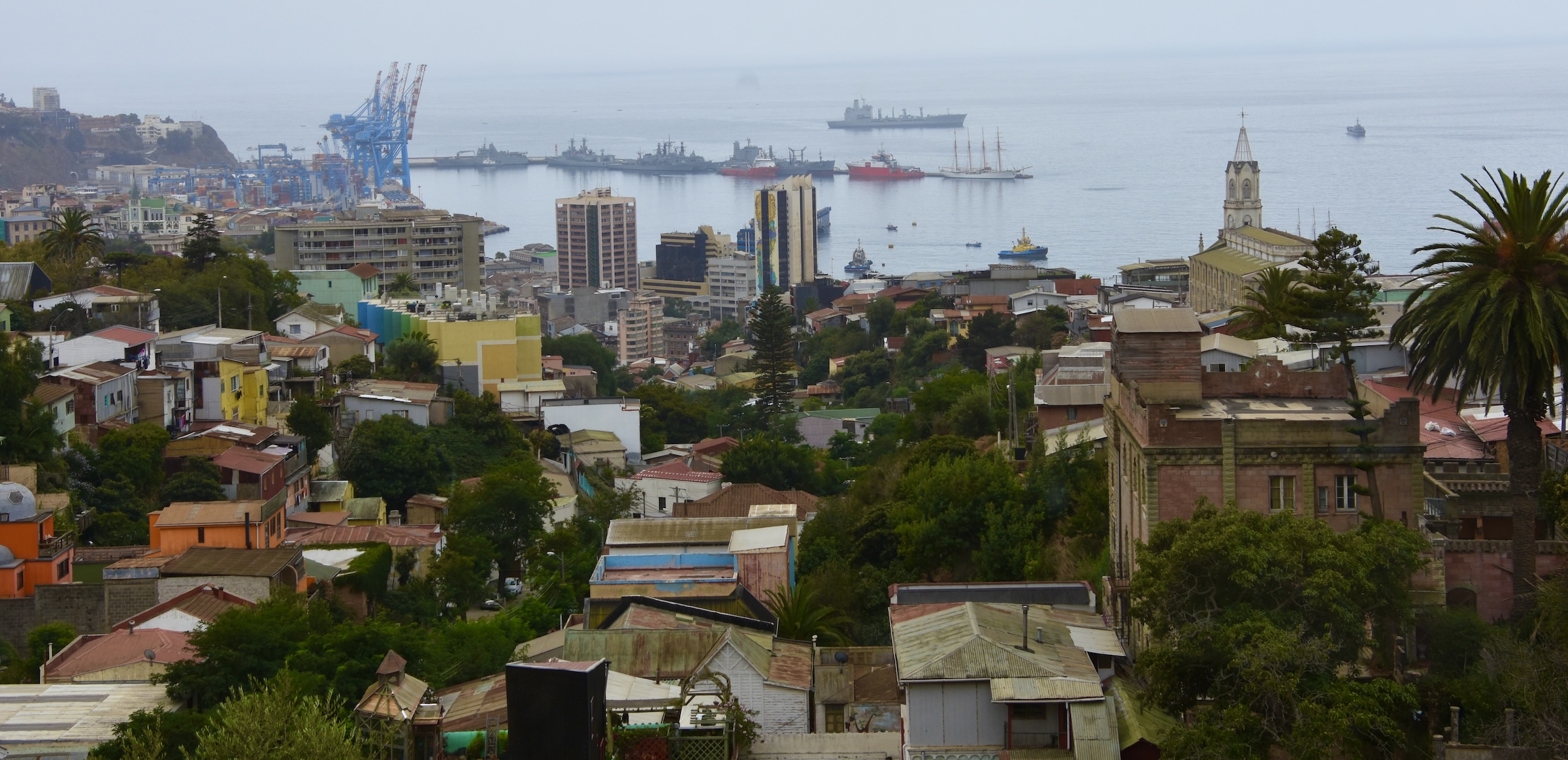
Valparaiso’s written history begins in 1536 with the arrival of the first Spanish ships sent from Peru by conquistador Diego de Almagro who had participated in the decimation of the Inca Empire with Francisco Pizarro. The fleet’s commander Juan de Saavedra founded a small settlement which he named after his home town in Spain, Valparaiso de Arriba, which today has a population of less than fifty souls along with his bones in the local church. De Almagro is credited (or discredited by the original occupants) with being the first European to actually set foot in present day Chile by way of a gruelling land expedition from Peru that crossed the Atacama Desert. On his return to Peru he had a falling out with Pizarro and was garrotted and then beheaded. A few years later Pizarro himself was assassinated by a group led by De Almagro’s son. Gotta love those conquistador vendettas.
Back to Valparaiso, it was founded only a decade or so after the remnants of Ferdinand Magellan’s crew arrived back in Spain and described the passage through the tip of South America from the Atlantic to the Pacific oceans. However, for almost the next three centuries the Spanish shipped their ill gotten gains from Peru, Bolivia and Colombia back to Spain via Panama, eschewing the dangerous Straits of Magellan in favour of the short land crossing from Pacific to Atlantic in Panama. About the only exciting things that seem to have happened in Valparaiso during these times was the arrival of Sir Francis Drake in 1578 and then Richard Hawkins in 1594 who both sacked the place.
With the advent of steam ships in the early 19th century, traversing the Straits of Magellan was less risky than relying solely on wind power and Valparaiso began its ascent to prosperity. In 1814 one of the great naval engagements of the War of 1812 was fought just outside Valparaiso harbour. It was a decisive British victory with the annihilation of the USS Essex under the command of David Porter who had been preying on British whaling ships with impunity for almost two years. Some of the 58 Americans killed in that battle are commemorated by a memorial in the Dissident’s Cemetery in Valparaiso. The story of the hunt for Porter’s ship by the British is one of the most interesting naval tales you’ll ever come across and something of a prelude to the 20th century’s hunt for the Bismarck. An interesting end note is that a town in Indiana was named after Porter, but later changed its name to Valparaiso which is a bit weird because that was the only naval engagement he ever lost.
After Chile gained independence in 1818 Valparaiso was chosen as the main base for the Chilean navy and remains so to this day. The final event that really put Valparaiso on the world map was the California Gold Rush of 1848-58 which saw thousands of Europeans flock to the goldfields by way of the Straits of Magellan. The city became the principal port on the South American coast and became a boom town. It also received immigrants from Britain, Germany, France and Italy which transformed the city from a typical Spanish colonial settlement to an urbane international community unlike any other in Chile.
By the late 19th century Valparaiso had over 160,000 residents who, running out of space near the waterfront, soon spread along the surrounding hillsides. Many of the houses were covered by sheets of corrugated metal that were left over from containers arriving in the port. These were then painted bright colours that in turn have given Valparaiso a look that is unique in the world. Here’s a closeup of what that corrugated metal looks like along with an interested spectator.
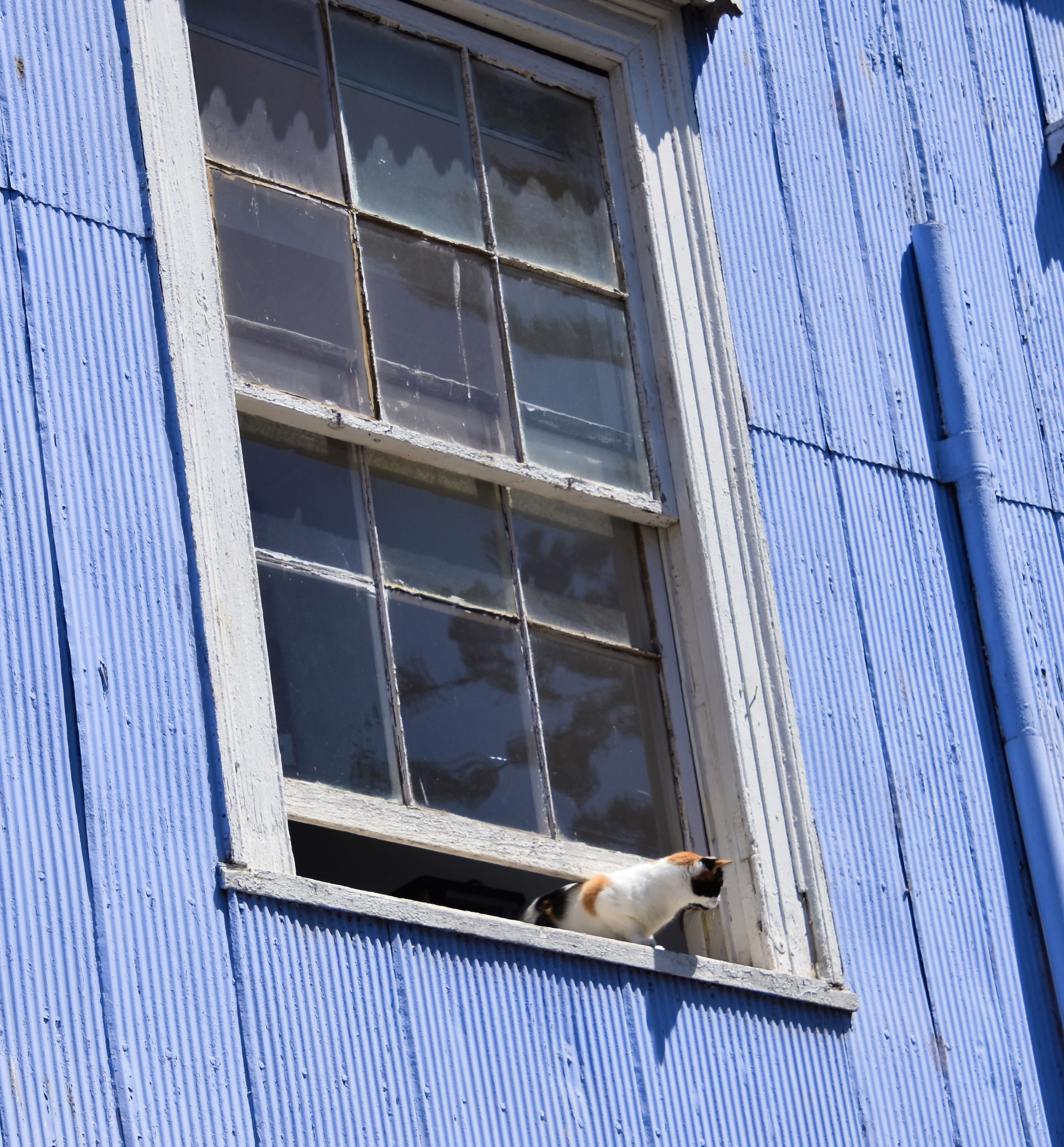
It was this combination of things that led to Valparaiso being inscribed as a UNESCO World Heritage Site in 2003 with this brief description:
The colonial city of Valparaíso presents an excellent example of late 19th-century urban and architectural development in Latin America. In its natural amphitheatre-like setting, the city is characterized by a vernacular urban fabric adapted to the hillsides that are dotted with a great variety of church spires. It contrasts with the geometrical layout utilized in the plain. The city has well preserved its interesting early industrial infrastructures, such as the numerous ‘elevators’ on the steep hillsides.
But alas, Valparaiso’s bubble began to burst in 1914 with the opening of the Panama Canal and the almost immediate drastic reduction in shipping revenue. The city entered a long period of decline which has only begun to be reversed in the late 20th century starting with the move of the National Congress from Santiago to Valparaiso by native son Augusto Pinochet in 1990. The city has become a magnet for artists and others seeking a Bohemian lifestyle and many of the traditional hillside dwellings are being refurbished. Street art in the form of murals has flourished to such an extent that there is now an official Street Art Route that draws tourists, including us, from all over the world to walk the cerros of Valparaiso.
Only a few months before our trip Valparaiso was in the world news because of devastating wildfires that destroyed over 2,800 homes. I was fully expecting to see a city in ruins based on the media coverage, but nothing could have been further from the truth. On the way from Santiago we passed through an area that had been devastated by these fires, but I could see no sign of damage in the city itself. Apparently the houses that were destroyed were on a hillside far away from the city proper.

So, fires aside, if Valparaiso is undergoing a resurgence, why the title to this post? It’s a bit difficult to explain, but I’ll try and remember this is based on my impressions of a visit of only a half day.
Let’s start with Charles Dickens. I expect most of my readers are familiar with his novel Great Expectations and its tragic character Miss Havisham. A great beauty in her youth, she was jilted at the altar by her lover and thereafter went into seclusion, never taking off her wedding dress. Well, if I were to describe an analogous city, it would be Valparaiso; once a world class city often compared to San Francisco, with the opening of the Panama canal her former callers abandoned her and she retreated into a shell of her former self. The many great commercial enterprises and the buildings they were housed in around the centre of the port are not coming back and my impressions are formed from the window of the bus as we pass them on the way to our first stop. Crumbling masonry, faded signage and other signs of neglect cannot hide what a beautiful and vibrant place this once must have been.
However, unlike Miss Havisham who died in her fire, Valparaiso has not, which is a good thing for the world. While the port may never be what it once was, that is not true of the many cerros or hillsides that surround the port which I noted are undergoing something of a renaissance and that’s where will head for our first stop.
At one time it took four or five hours to drive from Santiago to Valparaiso, but with the opening of Route 68 with its long tunnels it now takes just over 90 minutes. The end of the drive is a long descent to sea level and we pass by the faded commercial buildings I described above and the Monument to the Heroes of Iquique which commemorates a revered event in Chilean history. After the South American countries gained independence they spent a lot of time fighting each other in a seemingly endless series of wars to determine who owned what. In 1879 Chile fought a war against Peru and Bolivia and on May 21 of that year a major sea engagement took place between the Chilean corvette Esmerelda and the Peruvian ironclad Huáscar just off the city of Iquique. Given that the Chilean ship had a wooden hull and the Peruvian one didn’t, the outcome of the Battle of Iquique was not hard to guess. However, the bravery of Captain Arturo Prat and his crew in fighting almost to the last man made them national heroes and inspired thousands of Chileans to volunteer for the navy and in the end, Chile won that war. May 21st is a national holiday in Chile.
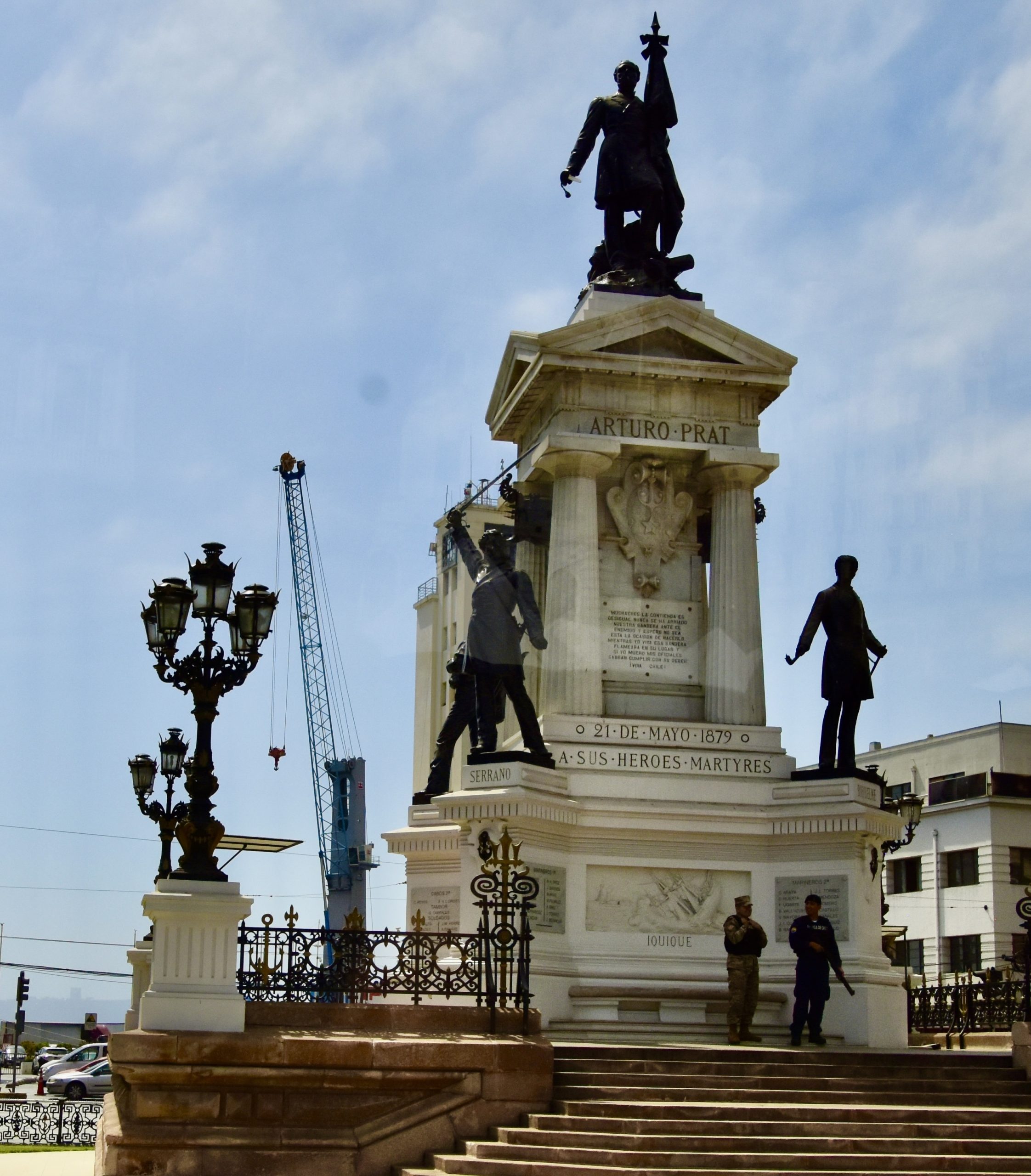
We also pass the Naval Headquarters which faces the monument.
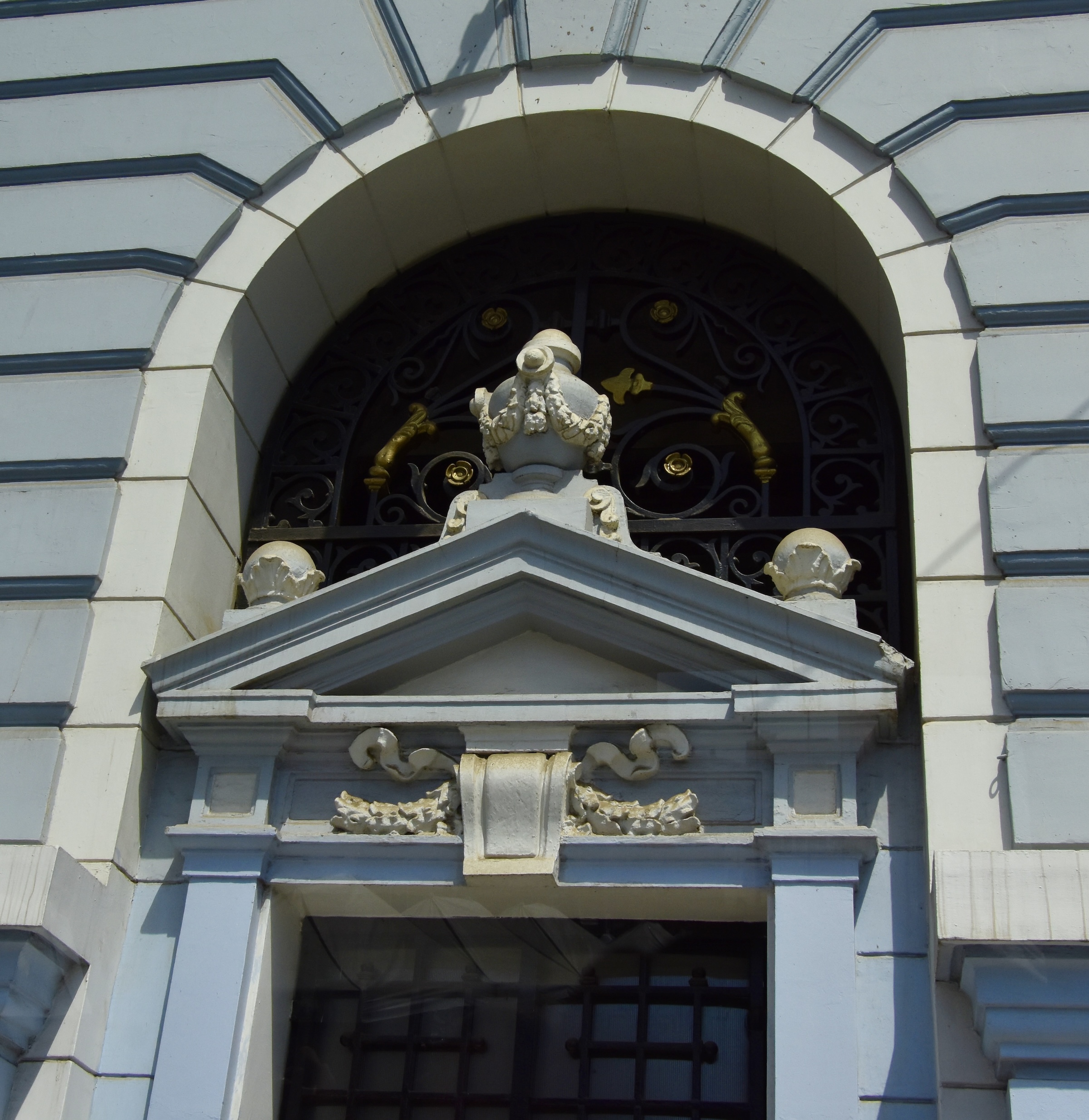
And the Arco Britanica which was given to the city of Valparaiso by the British community in 1910 to commemorate not only the centenary of Chilean independence, but also a number of British naval officers who served in the Chilean navy during the fight for independence. One of those was Thomas Cochrane who was the real life inspiration for both Horatio Hornblower and Jack Aubrey.
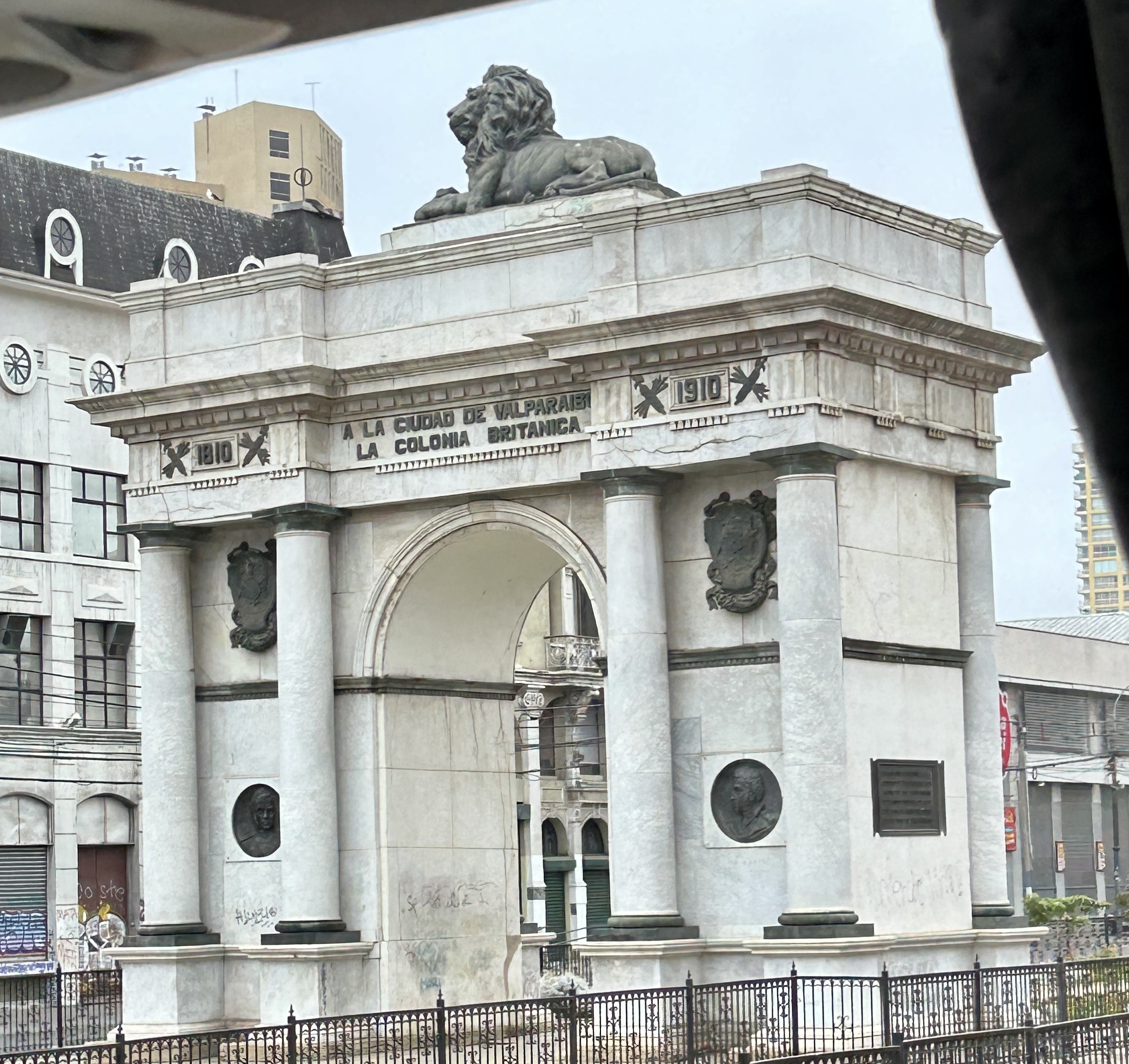
Leaving the waterfront our bus begins the long climb up one of the many Valparaiso hillsides (cerros), but quickly runs into a roadblock set up for the 2024 Red Bull Cerro Abajo which is the longest downhill urban bike race in the world. I dearly would have liked to watch, because if I had this is what I would have seen.
However, we have something a little more sane to see to and our driver expertly navigates the narrow twisting streets to get us there.
Pablo Neruda House – La Sebastiana
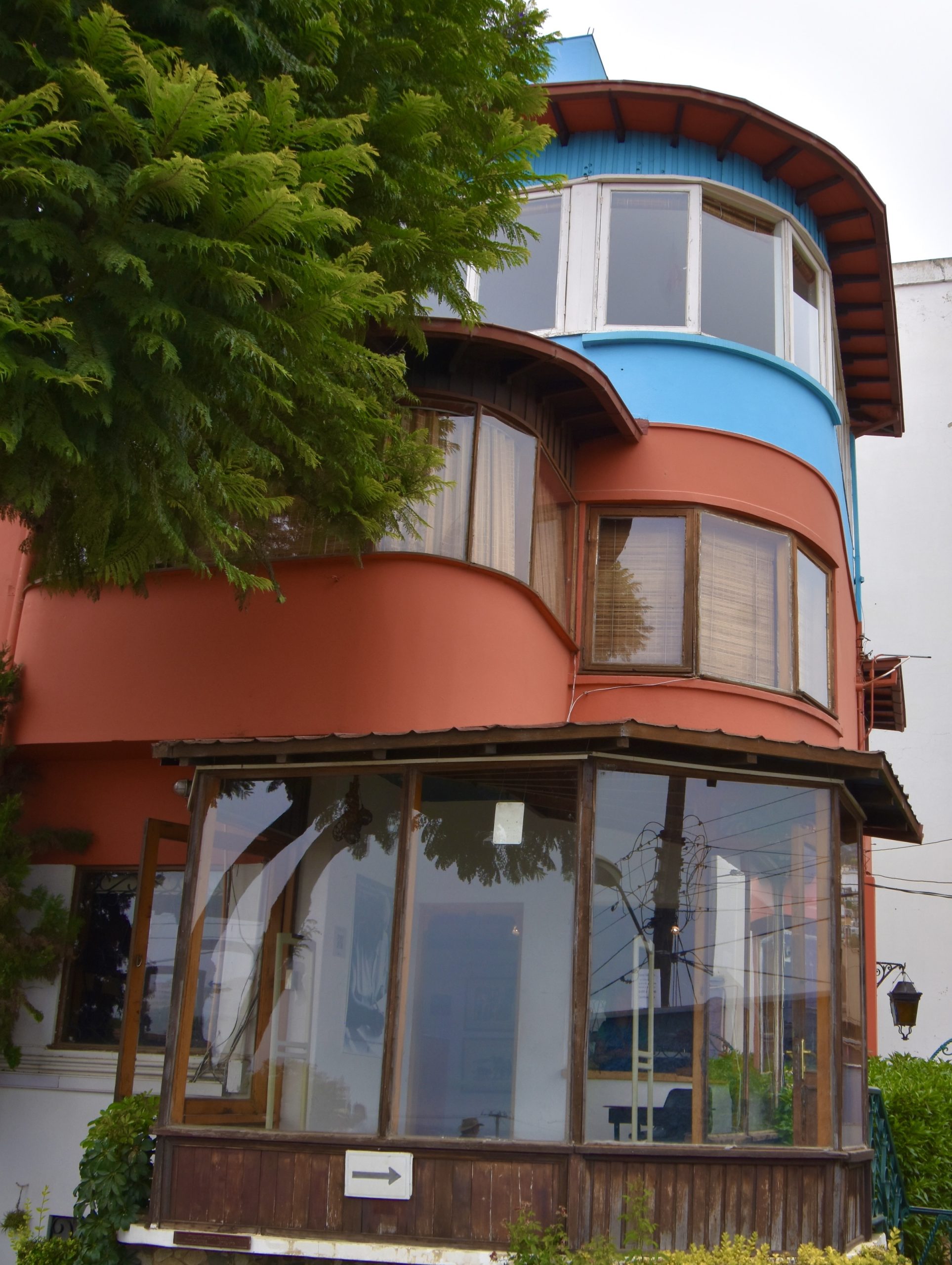
Pablo Neruda is Chile’s national poet and still a controversial figure in that country fifty years after his death. Recognized as a poetic genius from the age of 13, he was awarded the 1971 Nobel Prize for Literature. However, he was also an avowed Communist and served as senator for the Chilean Communist Party until communism was outlawed in 1948 and he had to flee the country for three years before being allowed back. When the left wing government of Salvador Allende was elected in 1970 he became a close advisor until Allende was overthrown and killed on September 11, 1973. At almost the same time Neruda had entered a hospital to be treated for cancer and died only two weeks later, which left plenty of room for conspiracy theories about his ‘real’ cause of death that remain unresolved to this day. Initially most believed he had been poisoned on the orders of General Pinochet, the leader of the junta, but subsequent toxicological tests point more to prostate cancer than poison, something that will never be accepted by his surviving family and friends.
While I certainly knew who Pablo Neruda was before coming to Chile, I knew little about his lifestyle. Now here’s the thing I always find repugnant about most Communists – they are complete hypocrites. While in Quito we visited the home of Oswaldo Guayasamín which I wrote about in this post. He is the national painter of Ecuador and was also a Communist. His palatial home on a hill overlooking the city was replete with photos of himself with Castro, Mao and other infamous dictators and murderers. Well Neruda is not much different. The Bellevista Florida district is one of the nicest in Valparaiso and that’s where this house is located.
He owned no less than three homes of which La Sebastiana is the one we are visiting today. It also sits on a hill with a commanding view of Valparaiso laid out below. This is the view from one of his decks.

So how can you profess to be a Communist and live like a materialist? Photos are not allowed of the interior or I could prove my point a little better. Let’s just say that while I have no issue with Neruda as a poet, I do take exception to his claim to be a ‘man of the people’.
It is time now to really find out why tourists love coming to Valparaiso as our local guide Eduardo leads us on a walking tour to take in some of the great street art the city is known for.
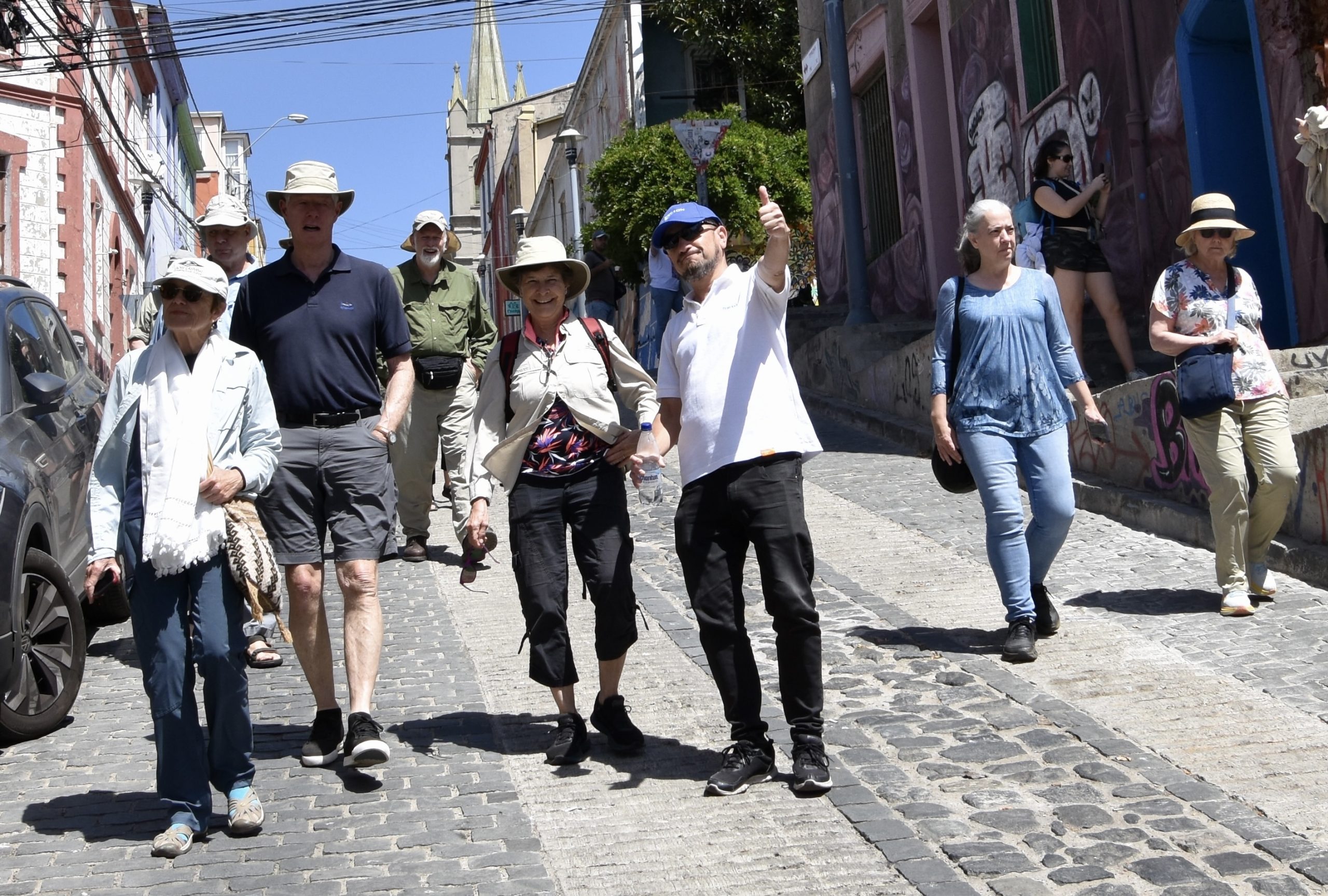
What follows is a gallery of just a few of the many great murals we walked past on this sunny mid-morning in roughly the order we saw them. Double click to open one and double click again to enlarge.
- Valparaiso Street Mural
- Painted Corrugated Zinc Building
- Cat and Dog Murals
- Man & Woman Mural
- Advertising Mural
- Contrasting Murals
- Feminist Mural
- History of Valpo Series
- History of Valpo Series
Here is a second gallery of photos from fellow tour member Joe Weber who shoots in RAW so his pics are very crisp. You can see more of Joe’s photos from this trip at www.weberwest.weebly.com.
- 0400 2024-03-03 Chile/Valparaiso Region/Valparaiso – Street Art in Cerro Alegre and Cerro Concepción neighborhoods
- 0325 2024-03-03 Chile/Valparaiso Region/Valparaiso – Street Art in Cerro Alegre and Cerro Concepción neighborhoods
- 0321 2024-03-03 Chile/Valparaiso Region/Valparaiso – Street Art in the Cerro Concepción neighborhood: Colorful stair mosaic on the risers, merging into a full image at Plaza de Los Poetas
- 0450 2024-03-03 Chile/Valparaiso Region/Valparaiso – Street Art in Cerro Alegre and Cerro Concepción neighborhoods
- 0549P 2024-03-03 Chile/Valparaiso Region/Valparaiso – Street Art in Cerro Alegre and Cerro Concepción neighborhoods
- 0553 2024-03-03 Chile/Valparaiso Region/Valparaiso – Street Art in Cerro Alegre and Cerro Concepción neighborhoods – part of the “Twolips” series
- 0552 2024-03-03 Chile/Valparaiso Region/Valparaiso – Street Art in Cerro Alegre and Cerro Concepción neighborhoods – part of the “Twolips” series
- 0551 2024-03-03 Chile/Valparaiso Region/Valparaiso – Street Art in Cerro Alegre and Cerro Concepción neighborhoods – part of the “Twolips” series
- 0326 2024-03-03 Chile/Valparaiso Region/Valparaiso – Street Art in Cerro Concepción neighborhood
Even the doghouses are brightly painted.
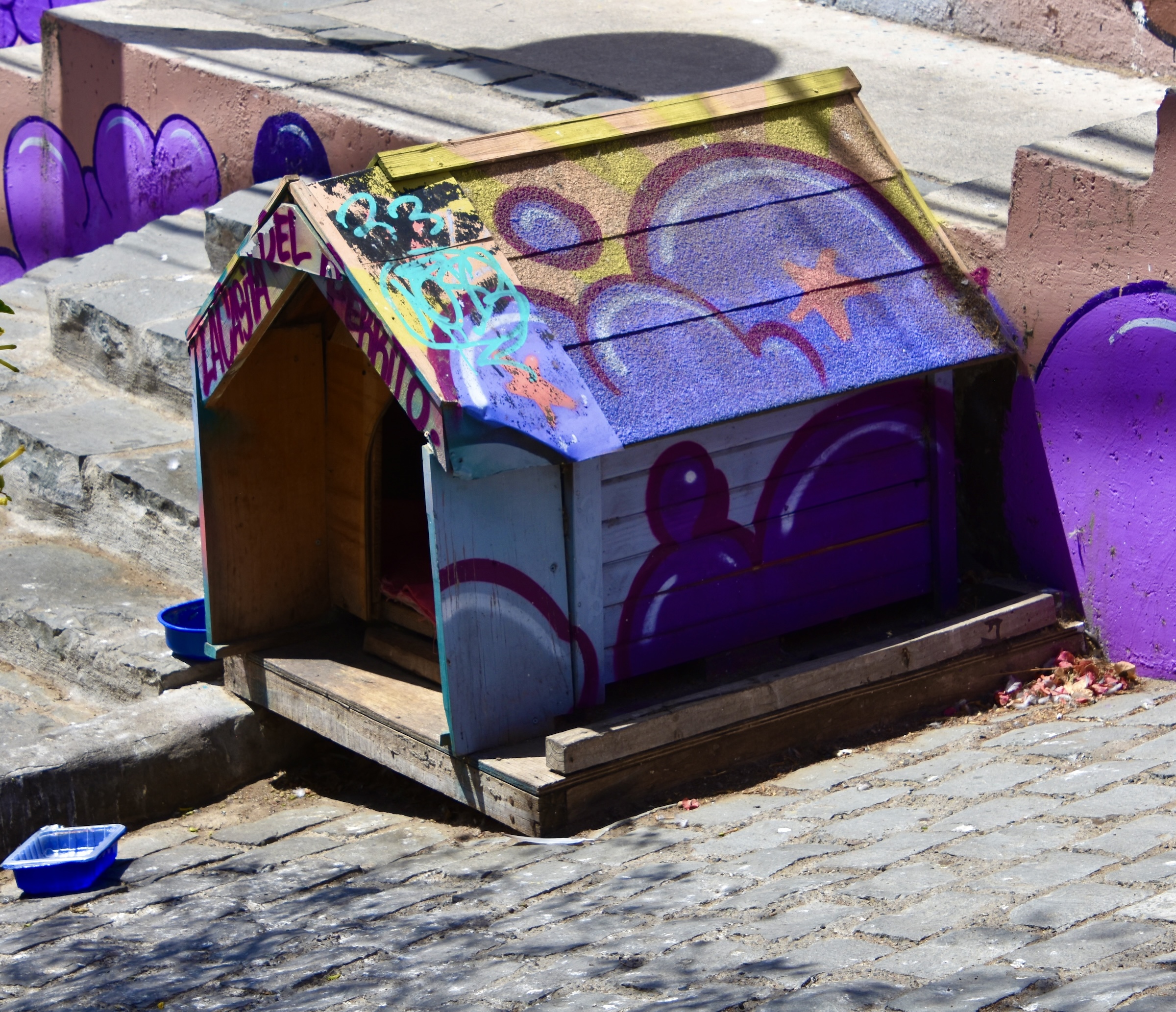
However, if you look closely at the doghouse you’ll see that some asshole has ‘tagged’ it with spray paint.
Unfortunately all is not fine art in Valparaiso – there is a horrible graffiti problem which I won’t dignify with another photo. This small mural of famous Latin American cartoon girl Mafalda is all you need to know. Why someone would deface these works of art is beyond me.
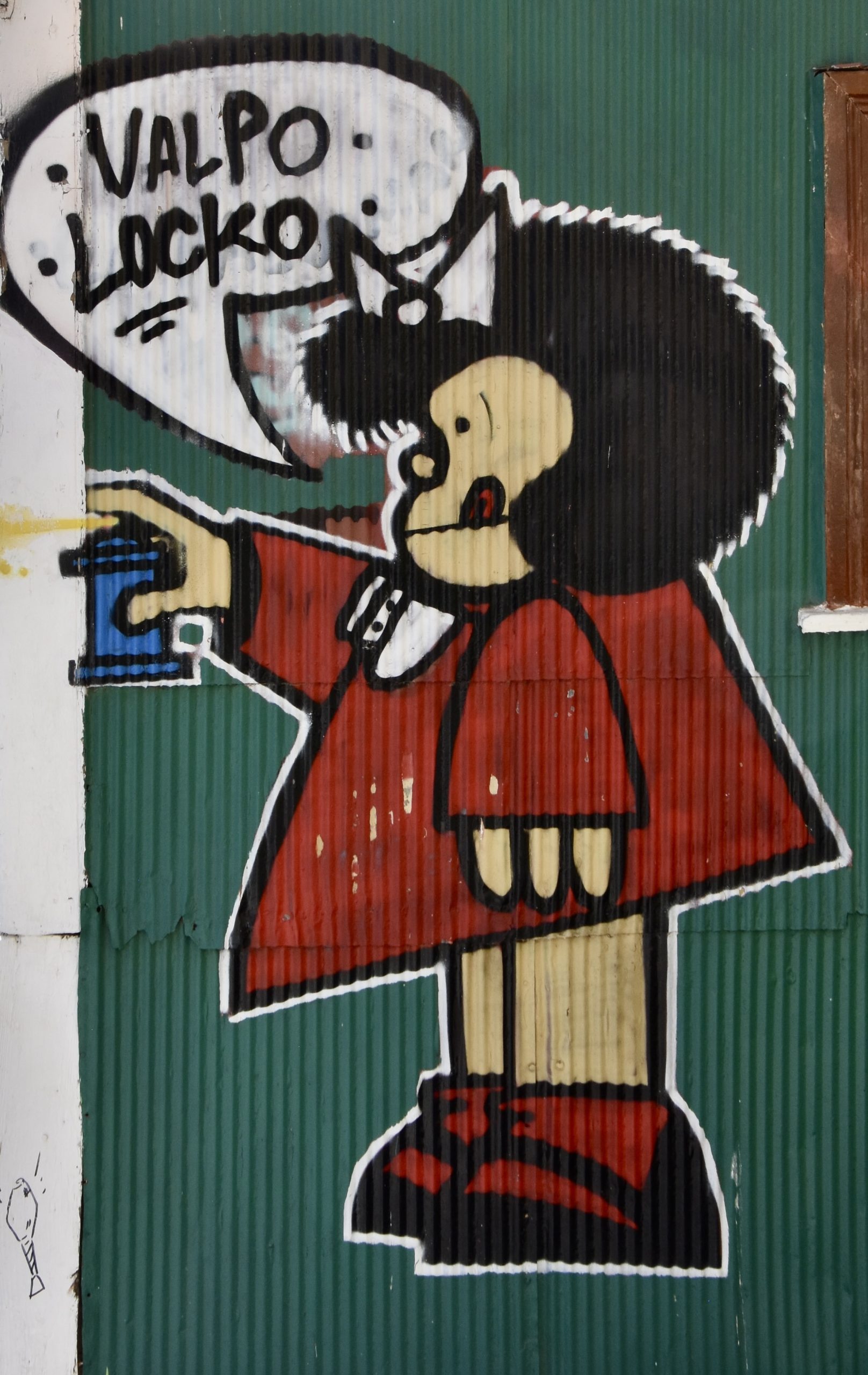
We reach the end of our walk at the top of one of Valparaiso’s famous ‘ascensors’ of which there are 16 still in the city out of an original 30. We would call them funiculars and they were essential for getting up and down the hills of the city before the advent of cars. They are now recognized as National Monuments and efforts are underway to restore all 16 to active use. The one we are taking is El Peral and as funiculars go, it is quite steep.
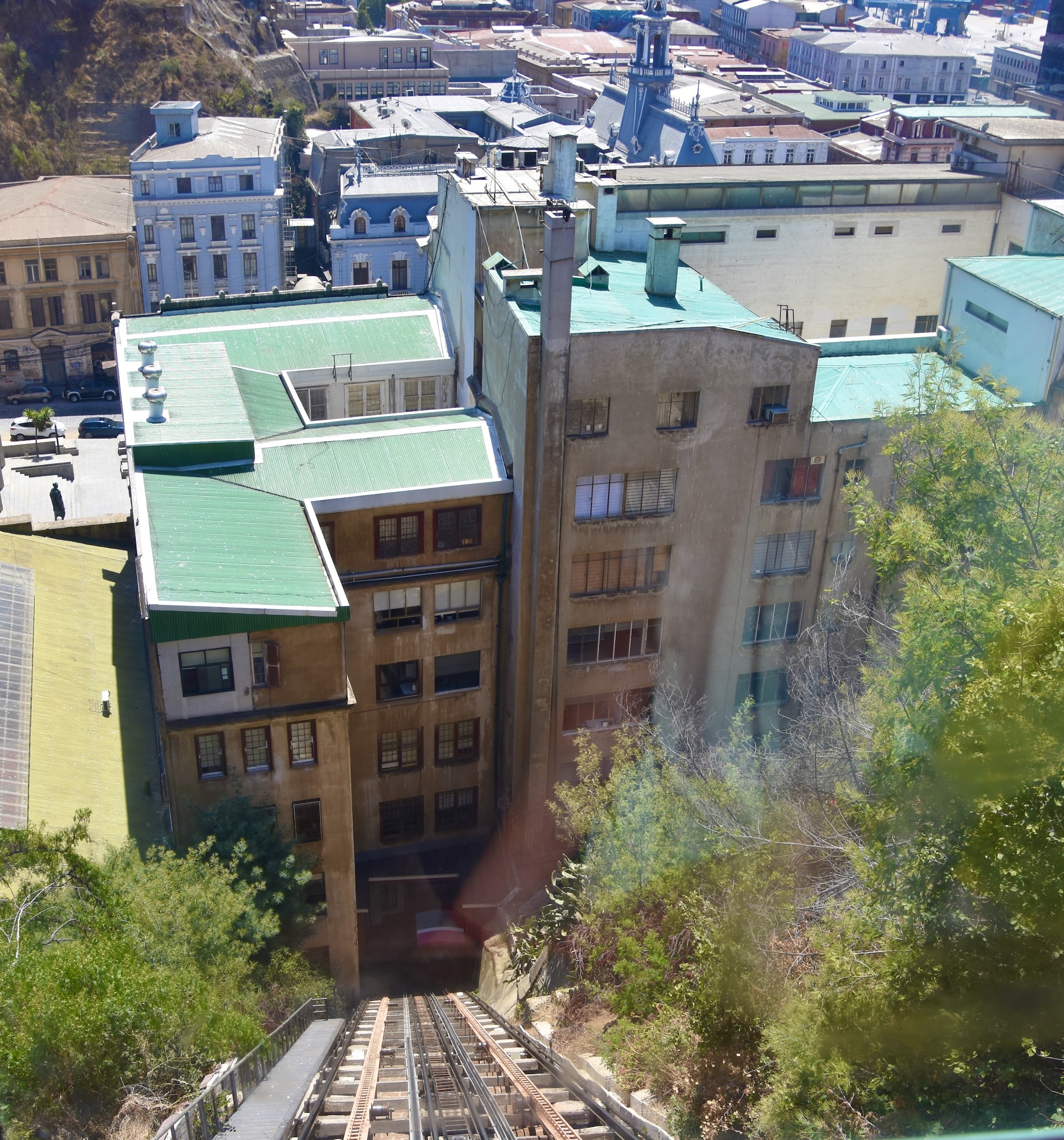
It also affords a great view of the harbour on the way down.
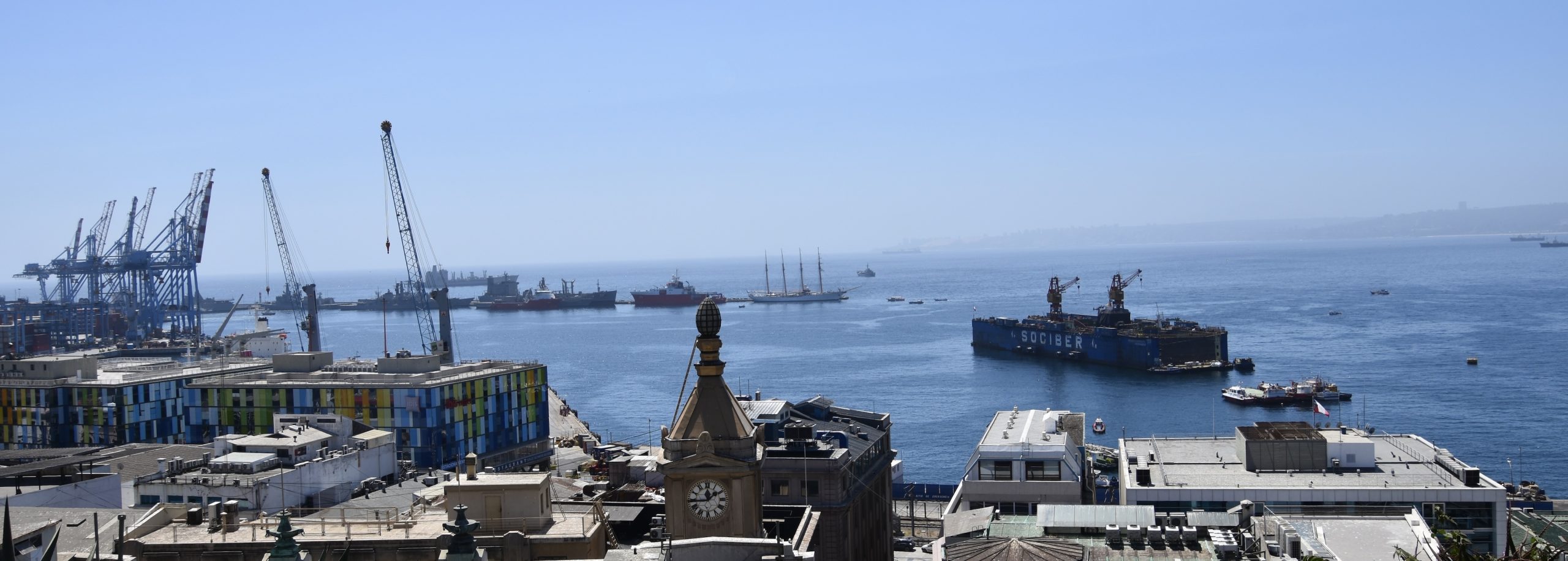
I first noticed a tall ship from the deck of La Sebastiana and now get a closer look. This is the Esmerelda, named for her illustrious star-crossed predecessor. It is the training vessel for the Chilean navy and I have seen it close up at the Tall Ships event in Halifax in 2017.
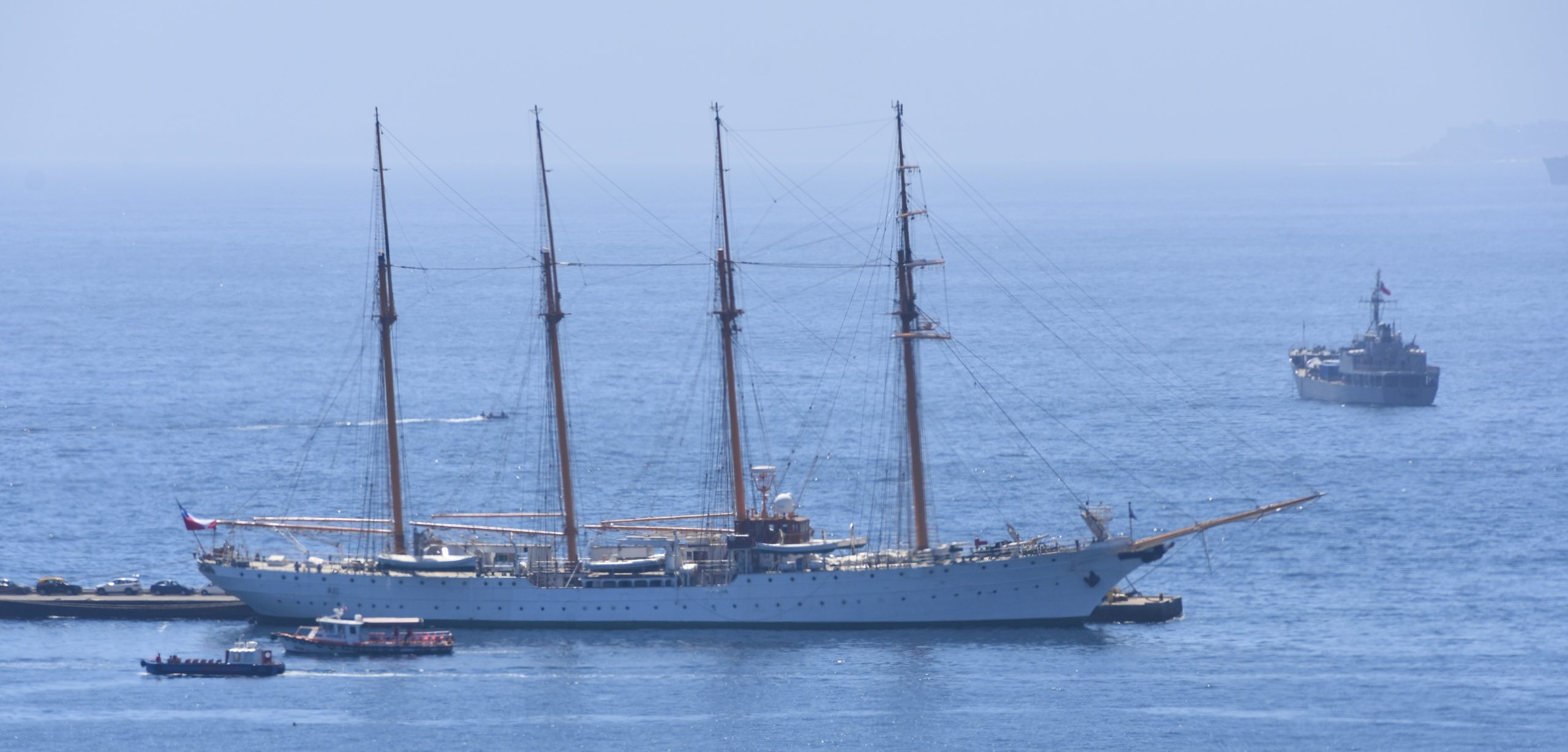
We are now back to ground level and waiting for our bus beside the Courts of Justice where Alison poses with a very unusual statue of Lady Justice. Instead of holding up the scales of justice, she has them hanging uselessly at her side as if the idea of true justice is a myth, which many people would ascribe to.
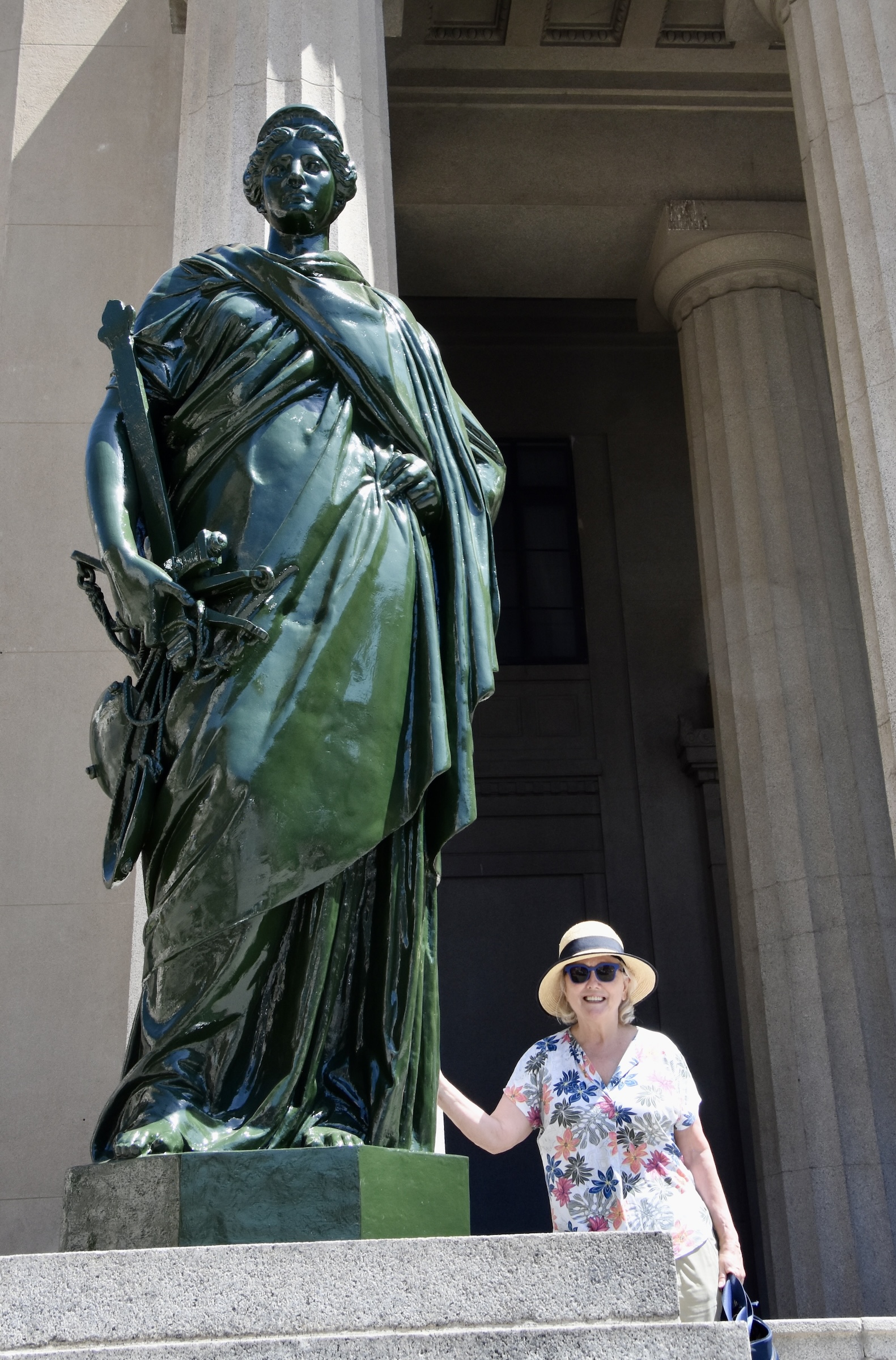
Our journey to Valparaiso concludes with a drive along the oceanfront to the much wealthier and newer city of Viña del Mar where we have a pre-arranged seafood meal at Nogaro restaurant which overlooks this nice little beach where some kids are having a ball playing in the surf.
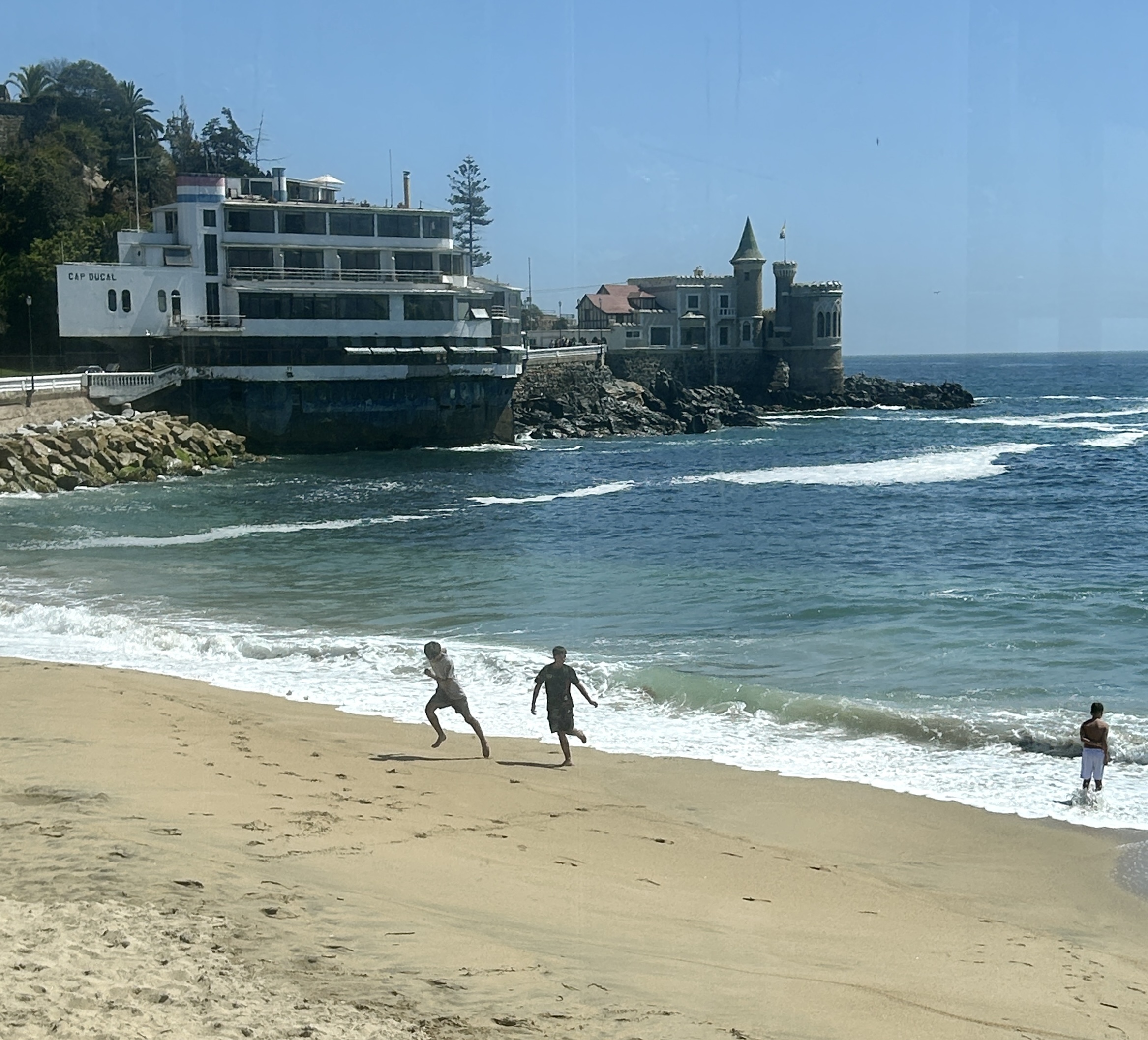
It’s a great way to end our day on the Chilean coast.
You can’t come to Chile and not visit a winery and that’s just what we’ll do in the next post as we visit Santa Rita bodega. Please join us.


